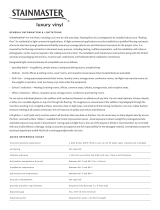
FLOATING LUXURY VINYL TILE
PREPARATION & INSTALLATION:
1. Why is acclimation necessary for my floor tiles and how long? Acclimation allows the solid vinyl flooring to become
equal to the installed environment. This will better allow the flooring to become more stable during normal temperature
fluctuations. All floors must be acclimated under normal site conditions and temperatures for 48 hours prior to
installation. Ideal room temperatures for luxury vinyl should be maintained at 65°F-85°F (19°C-29°C).
2. What subfloors are approved for floating luxury vinyl planks?
a. Concrete Subfloors- must be flat, dry smooth, and free from dust, solvent, wax, grease, oil and other extraneous
materials
b. Wood Subfloors-APA rated exterior grade plywood B-C sanded face
c. APA rated underlayment panels
d. APA rated OSB- minimum ¾” thickness and installed per APA guidelines
e. NEVER INSTALL OVER LUAN, PARTICLE, CHIP OR STRAND PLYWOOD, MASONITE or any other type of
hardboard underlayment.
f. Existing Floor Coverings- Yes, if the surface is smooth, firmly bonded and leveled with a cement based leveling
embosser. Existing floor cannot be cushioned.
3. Can Floating Luxury Vinyl be installed in direct Sunlight? Direct sunlight will heat up the flooring causing it to expand in
length and width. The use of suitable window coverings to block direct sunlight in times of exposure is highly
recommended to avoid joint separation.
4. Can Floating Luxury Vinyl be installed over radiant heated floors? Yes, as long as the temperature stays set between
65°-85°F.
5. Can Floating Luxury Vinyl be installed on Stairs? Yes, although specific steps must be taken to ensure that the flooring is
properly installed on stairs, please email us directly for instructions, stainmasterlvtinfo@novalis-intl.com
6. Can Floating Luxury Vinyl be installed on the walls? Our vinyl tiles and planks are not manufactured for use on vertical
surfaces and may not pass the local building code for flame spread index.
7. Is this Floating Luxury Vinyl suitable for a basement? Yes, and it is recommended that a moisture test be conducted
prior to installation. Moisture vapor that is trapped under the vinyl flooring can cause an unhealthy environment in the
home. Consult Novalis if excessive moisture is found in the concrete subfloor.
8. Do I need to use a transition and if so, when? Transition mouldings are required in all doorways and archways less than
6 feet wide; for solid funs of flooring longer than 30 lineal feet; when butting up to other types of floor covering
9. Can flooring be installed in homes with wheelchair access? Yes. Luxury vinyl flooring is suitable for use in homes
that are ADA compliant for wheelchair access, but not recommended for use on ramps and sloped
surfaces. Use of motorized wheelchairs and scooters is not recommended on floating vinyl flooring as damage
may occur to the locking mechanisms.
MAINTENANCE:
1. How do I clean my floor? Use a DAMP mop and “neutral pH” cleaner to remove any sediments or contaminants to
the flooring. These cleaners are safe enough for regular use on solid, luxury vinyl flooring. Do not use any type of
chemical or harsh cleaners. Regular sweeping and vacuuming with and electric broom are also recommended. Do
not use a vacuum with a standard “bristled beater bar” as this can damage the wear layer on the floor covering.
2. What shouldn’t I use on my floor to clean it? Don’t use the following: Abrasive cleaners, abrasive powders, oil
based cleaners, detergent based cleaners, multi surface cleaners or bleaches.
3. What can I use to bring a shine to my floor? Use of satin or gloss floor finishes will enhance the sheen of a vinyl
floor. Be sure to use a floor finish that is compatible with solid vinyl tiles.
4. Can I use a Swiffer? Yes. Swiffer’s work well for daily maintenance on your vinyl floors.
FREQUENTLY ASKED QUESTIONS

5. Can I use a steam mop? No.
MISCELLANEOUS:
1. How can I prevent scuff marks, scratches or gouging? Apply an aftermarket finish to the flooring to prevent scuffing and
minor scratching. Use felt type furniture protectors on all furniture legs and bottoms. When moving heavy furniture, use
soft “Sliders” specifically made for hard surface floors.
2. Will my pets damage my floor? Common household pets are fine, but keep in mind that some dogs have tougher,
sharper nails and will gain traction differently on a hard surface floors causing them to grip with their claws more.
Keeping your pet’s nails trimmed and filed will aid in prevention of scratches, by keeping them on the pads of their feet.
3. Are furniture protectors really necessary? YES!! Furniture protector pads ARE necessary to prevent surface scratching
and scuffing. Nylon type protectors are the best to use. Felt protectors can be used but must be changed frequently to
keep the amount of embedded debris to a minimum. We recommend replacement >3 times a year to avoid buildup of
debris on the felt.
4. What type of rugs should I use? Area rugs, walk off mats and throw rugs should NOT have rubber backing. Keep to soft
surface fabric backed area rugs to prevent scratching or discoloration of your floor.
CLAIM PROCESS:
How do I file a claim?
While Novalis strives to manufacture the highest quality of of luxury vinyl flooring available today, we realize there may be an
occasion for a customer to file a claim. Please follow the following steps below to contact us regarding any issues you may
have with your Stainmaster
â
luxury vinyl floor.
1. Call 1-866-668-2547 extension 221 to obtain a claim form
2. Fill out the claim form to its entirety with as much detailed information as possible
3. Provide us with pictures showing the issues you are having with your floor.
4. Fax, email or mail back with a copy of your purchase receipts and pictures. (note: no claims will be processed without the
proper proof of purchase receipts)
a. Email: lowesclaim@novalis-intl.com
b. FAX: 704-799-1121
c. Mail: Novalis 105 Uppercrest Dr. Mooresville, NC 28117
5. Labor charges are not covered and will NOT be reimbursed. This product is intended for residential use and a do-it-
yourself application and installation. Please see warranty for further information.
6. Once information is received back, please allow 7-14 business days to process the claim. The customer will be notified
using the contact information provided on the claim form.
7. Novalis reserves the right to request samples or perform a site inspection on all claims.
We advise you read all documentation regarding installation and your warranty thoroughly before installing your
Stainmaster
â
luxury vinyl floor. If you have any questions, please contact us immediately for help.
Email: stainmasterlvtinfo@novalis-intl.com
Phone: 1-866-668-2547 ext. 221
Thank you for your purchase and we hope you love your new floor!
-
 1
1
-
 2
2
STAINMASTER LWD6842CCF User manual
- Type
- User manual
- This manual is also suitable for
Ask a question and I''ll find the answer in the document
Finding information in a document is now easier with AI
Related papers
Other documents
-
Style Selections LWD5319EPS User manual
-
Unbranded FECV10016 User manual
-
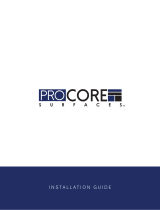 ProCore LWD9757RCA Installation guide
ProCore LWD9757RCA Installation guide
-
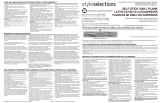 Style Selections WD4011 Installation guide
Style Selections WD4011 Installation guide
-
Lowes PROCORE PRO Operating instructions
-
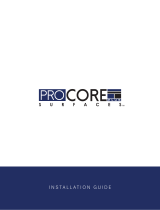 ProCore Plus LWD8777RCB Installation guide
ProCore Plus LWD8777RCB Installation guide
-
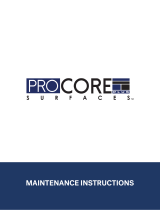 ProCore Plus HBWD8776 6-Inch Wide x 6-mm Thick Waterproof Interlocking Luxury Vinyl Plank Flooring User manual
ProCore Plus HBWD8776 6-Inch Wide x 6-mm Thick Waterproof Interlocking Luxury Vinyl Plank Flooring User manual
-
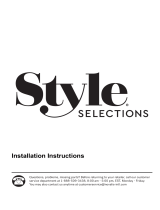 Style Selections LWP20070 User manual
Style Selections LWP20070 User manual
-
Style Selections LWD5471BPS Installation guide
-
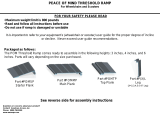 Peace Of Mind POMT3 Operating instructions
Peace Of Mind POMT3 Operating instructions



